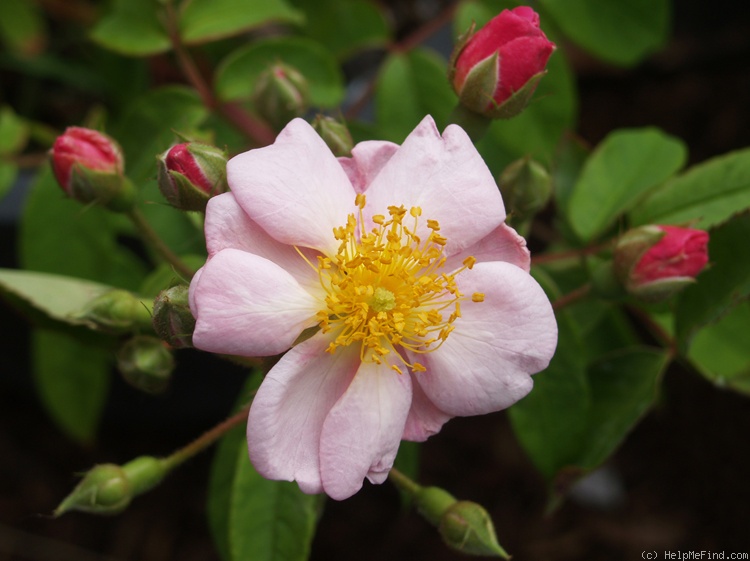|
|
'Super Jane' rose Description

Photo courtesy of Jeri Jennings
HMF Ratings:
22 favorite votes.
Average rating:
EXCELLENT.
ARS:
Medium pink Hybrid Musk.
Registration name: Super Jane
Exhibition name: Super Jane
Bloom:
Pink. Strong, musk, sweet fragrance. 6 to 8 petals. Average diameter 1". Small, double (17-25 petals), cluster-flowered, in large clusters, cupped-to-flat bloom form. Blooms in flushes throughout the season.
Habit:
Arching, armed with thorns / prickles, bristly , climbing, few or no prickles/thorns, spreading. Medium, semi-glossy, medium green foliage.
Height: 10' to 12' (305 to 365cm). Width: 6" to 10" (15 to 25cm).
Growing:
USDA zone 6b through 9b (default). Can be used for garden, landscape, pillar or specimen. Can be trained as a climber. flowers drop off cleanly. heat tolerant. shade tolerant. Disease susceptibility: very disease resistant. Remove spent blooms to encourage re-bloom. Needs little care; relatively disease-free and quite hardy.
Breeder's notes:
This rose, and its sister, were originally intended to commemorate a premier Southern California Rose Nursery I ran for a while. The producer who was to introduce it was never able to provide any plants of it, so none were ever sold with the first name. Some years later, a great rose friend accidentally ended up with a plant of this. I didn't know I had it, and when I tried to give him a plant of Annie Laurie McDowell, this is what he received. He liked the rose (as I always have), and asked its name. I suggested he name it, which he did, for his wonderful wife, Jane (Mrs. James Delahanty). Hence, Super Jane honors her and is the proper name for this rose.
This rose can express canes completely without ANY prickles. It can also express canes covered in the dense, small prickles from its mutliflora heritage, and even canes with large, hooked, climbing tool type prickles.
Patents:
Patent status unknown (to HelpMeFind).
|